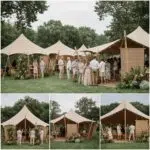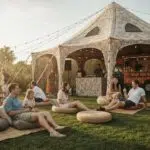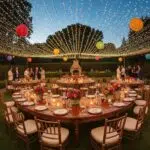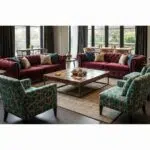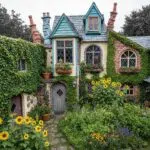Are you planning an outdoor event? Weather can be unpredictable, but having the right accessories can ensure your guests are comfortable. This guide covers essential gear for outdoor events: heaters for chilly evenings, fans for hot days, and umbrellas for unexpected rain. Learn how to choose, use, and maintain these items to keep your guests comfortable in any weather. With these tools, you’ll be ready to host successful outdoor events all year round.
Key Takeaways
- Outdoor event accessories like heaters, fans, and umbrellas ensure guest comfort in various weather conditions
- Proper placement and coordination of accessories create inviting spaces and enhance the overall event experience
- Regular maintenance and care extend the lifespan of outdoor event equipment for future gatherings
- Selecting the right size and type of accessories based on event needs is crucial
- Combining comfort elements with decorative touches creates a relaxed atmosphere for guests
Importance of Outdoor Event Accessories
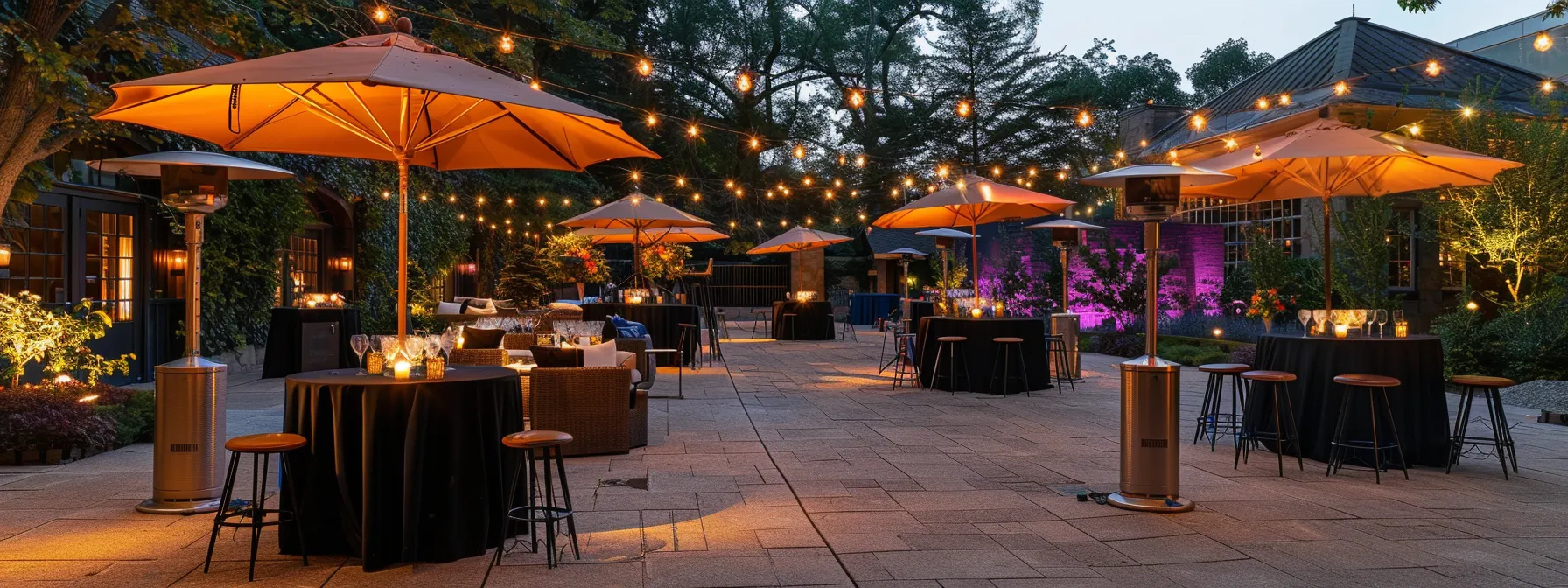
Outdoor event accessories create comfortable and inviting spaces for guests. From heaters and fans to umbrellas, these items help adapt to various weather conditions, ensuring events run smoothly. Whether planning an outdoor wedding ceremony or a casual party, selecting the right accessories can enhance the overall experience and protect valuable elements like candles displays from the elements.
Enhancing Comfort for Guests
Enhancing guest comfort is paramount for successful outdoor events. Whether hosting a birthday celebration or a garden party, accessories like heaters, fans, and umbrellas create a welcoming atmosphere. These elements work together to protect guests from sun, rain, or chilly temperatures, allowing them to enjoy the event fully. By incorporating versatile accessories that complement wood or concrete settings, event planners ensure attendees remain comfortable throughout the occasion, from the moment they see the festive banner to the last goodbye.
Adapting to Weather Conditions
Outdoor event accessories play a vital role in adapting to unpredictable weather conditions. Whether planning a trade show, backyard party, or outdoor birthday celebration, organizers must be prepared for various scenarios. Patio heaters provide warmth during cool evenings, while portable fans offer relief on hot days. Umbrellas and canopies protect guests and decor from unexpected rain showers, ensuring the event continues smoothly regardless of the forecast.
Creating Inviting Spaces
Creating inviting spaces for outdoor events involves more than just basic seating arrangements. Event planners utilize a combination of outdoor party supplies and wedding decorations to transform ordinary venues into captivating environments. For picnics, heavy-duty aisle runners provide stable walkways, while strategically placed heaters, fans, and umbrellas ensure guest comfort in varying weather conditions. These elements work together to foster a welcoming atmosphere that encourages guests to relax and enjoy the event. Here are some key tips for setting up the space:
- Arrange seating areas with comfortable chairs and tables.
- Set up decorative lighting to enhance ambiance.
- Place heaters or fans strategically for temperature control.
- Use umbrellas or canopies for shade and rain protection.
- Add outdoor rugs or aisle runners to define different spaces.
Exploring Outdoor Heaters for Events
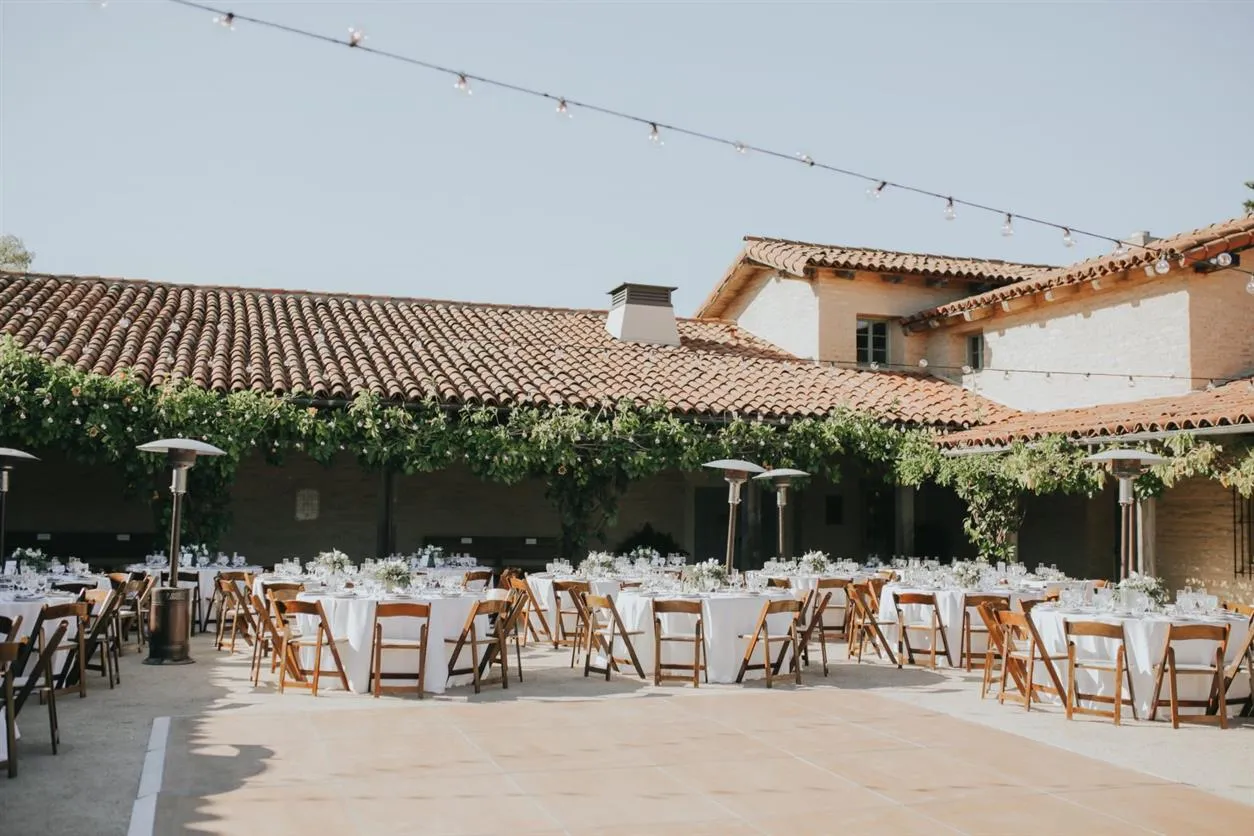
Outdoor heaters are essential for comfortable backyard weddings and garden parties. This section explores various heater types, fuel sources, safety features, and placement strategies. Event planners can select the right heaters to complement outdoor party decorations and wedding sun umbrellas, ensuring guests stay warm while enjoying the festivities. Understanding these factors helps create inviting spaces for any outdoor gathering.
Types of Outdoor Heaters
Outdoor event planners can choose from various heater types to keep guests comfortable. Propane patio heaters offer portable warmth for backyard weddings and garden parties, while electric infrared heaters provide efficient heating for covered areas. For a rustic ambiance, fire pits or chimineas can serve as both heat sources and decorative elements, complementing outdoor lighting and creating cozy spaces for guests to enjoy wine and conversation on the porch.
Fuel Sources and Efficiency
Outdoor heaters use various fuel sources, each with different efficiency levels. Propane heaters offer portability and quick heat, ideal for open-air events. Electric heaters provide clean, instant warmth and work well in covered areas. Natural gas heaters offer continuous operation but require fixed installation. Wood-burning options create ambiance but have lower efficiency. Event planners should consider fuel availability, heating needs, and venue restrictions when selecting heaters:
| Fuel Type | Efficiency | Best Use |
|---|---|---|
| Propane | High | Open-air events |
| Electric | Very High | Covered areas |
| Natural Gas | High | Fixed installations |
| Wood | Low | Ambiance |
Safety Features to Consider
Safety features are paramount when selecting outdoor heaters for events. Event planners should prioritize models with tip-over protection, automatic shut-off mechanisms, and stable bases to prevent accidents. Proper ventilation is crucial for fuel-burning heaters, while electric models should have weatherproof ratings for outdoor use. Regular maintenance and following manufacturer guidelines ensure optimal performance and guest safety throughout the event.
Placement Strategies for Maximum Effect
Effective placement of outdoor heaters maximizes warmth distribution and guest comfort. Event planners should position heaters strategically around seating areas, buffet tables, and dance floors. For optimal coverage, space heaters evenly, considering wind direction and obstacles. Here are key placement strategies:
- Place heaters 6-8 feet apart for balanced heat distribution
- Position heaters near gathering spots and high-traffic areas
- Avoid placing heaters under overhangs or near flammable materials
- Adjust heater height based on the event space and guest preferences
- Use reflective surfaces to redirect heat towards guests
Choosing the Right Fans for Open-Air Gatherings
Selecting the right fans for open-air gatherings is crucial for guest comfort. This section explores different fan types, sizing considerations, energy-efficient options, and optimal air circulation strategies. Understanding these factors helps event planners choose fans that effectively cool outdoor spaces while complementing the overall event ambiance.
Different Fan Types and Their Uses
Event planners can choose from various fan types to keep guests cool during open-air gatherings. Pedestal fans offer versatility and adjustable height, making them suitable for different event layouts. Misting fans provide a refreshing spray along with air circulation, ideal for hot summer events. For larger spaces, high-volume, low-speed (HVLS) fans efficiently move air across wide areas, while portable battery-operated fans offer flexibility for smaller gatherings or individual guest comfort.
Selecting the Appropriate Size and Power
Selecting the appropriate size and power for outdoor event fans depends on the venue’s dimensions and expected attendance. Event planners should consider the cubic feet per minute (CFM) rating, which indicates the fan’s air-moving capacity. For larger spaces or crowded events, higher CFM ratings are necessary to ensure adequate air circulation. The fan’s power source, whether electric or battery-operated, should also match the event’s duration and available power supply. Here’s a guide for fan selection based on event size:
| Event Size | Recommended Fan Type | CFM Range |
|---|---|---|
| Small (up to 50 guests) | Pedestal or Tower Fans | 1,000 – 3,000 CFM |
| Medium (50-150 guests) | High-Velocity Floor Fans | 3,000 – 7,000 CFM |
| Large (150+ guests) | HVLS or Industrial Fans | 7,000+ CFM |
Energy Efficiency and Eco-Friendly Options
Energy-efficient and eco-friendly fan options offer event planners sustainable cooling solutions. Modern DC motor fans consume less power while delivering strong airflow, reducing energy costs and environmental impact. Solar-powered fans provide a green alternative for daytime events, harnessing renewable energy to keep guests comfortable. Some manufacturers now produce fans with recycled materials, further minimizing the carbon footprint of outdoor gatherings.
The Role of Fans in Air Circulation
Fans play a crucial role in air circulation for open-air gatherings, creating a comfortable environment for guests. By moving air effectively, fans help regulate temperature, reduce humidity, and disperse odors. Event planners strategically place fans to maximize airflow and create cooling zones throughout the venue. This thoughtful arrangement ensures guests remain comfortable, even during warm weather events:
- Position fans near seating areas and high-traffic zones
- Use oscillating fans to cover wider areas
- Combine ceiling and floor fans for comprehensive air movement
- Place fans at different heights to address various guest preferences
- Consider wind direction when arranging outdoor fan setups
Must-Have Umbrellas for Protection From Elements
Umbrellas are essential for protecting guests and event elements from sun and rain. This section explores various outdoor umbrella types, size and style selection, stability features for windy conditions, and versatile uses beyond shade. Understanding these aspects helps event planners choose the right umbrellas to ensure comfort and protection at outdoor gatherings.
Varieties of Outdoor Umbrellas
Event planners can choose from a variety of outdoor umbrellas to protect guests from sun and rain. Market umbrellas, with their classic octagonal shape, offer ample coverage for dining areas and seating zones. Cantilever umbrellas provide flexible shade options with their offset design, allowing for unobstructed views. For larger events, commercial-grade umbrellas offer durability and expansive coverage, while beach umbrellas provide portable protection for casual outdoor gatherings.
Choosing the Right Size and Style
Selecting the right size and style of umbrellas for outdoor events requires careful consideration of the venue and guest needs. Event planners should measure the areas requiring coverage and choose umbrella sizes that provide adequate shade without overcrowding the space. For dining tables, a general rule is to select an umbrella with a diameter 4-5 feet larger than the table. Styles range from classic market umbrellas to modern cantilever designs, allowing planners to match the event’s aesthetic while ensuring functionality.
Stability Features for Windy Conditions
Stability features are crucial for outdoor umbrellas in windy conditions. Event planners should choose umbrellas with sturdy bases, often filled with water or sand, to prevent tipping. Some models feature wind vents that allow air to pass through, reducing uplift and increasing stability. Reinforced ribs and durable fabrics help umbrellas withstand gusts, while tie-downs or stakes offer additional security for prolonged use in breezy environments.
Versatile Use Beyond Shade
Umbrellas offer versatile uses beyond providing shade at outdoor events. Event planners can repurpose them as decorative elements, using colorful or patterned umbrellas to create eye-catching displays or photo backdrops. In rainy conditions, strategically placed umbrellas can protect food stations, gift tables, or entertainment equipment. Some events incorporate umbrellas into interactive activities, such as umbrella painting stations or parasol dances, adding a unique touch to the gathering:
| Umbrella Use | Function | Event Type |
|---|---|---|
| Decorative Display | Visual Appeal | Weddings, Garden Parties |
| Rain Protection | Equipment Safeguard | Outdoor Concerts, Festivals |
| Interactive Element | Guest Engagement | Corporate Events, Fairs |
| Lighting Fixture | Ambiance Creation | Evening Gatherings, Receptions |
Combining Heaters, Fans, and Umbrellas for Optimal Comfort
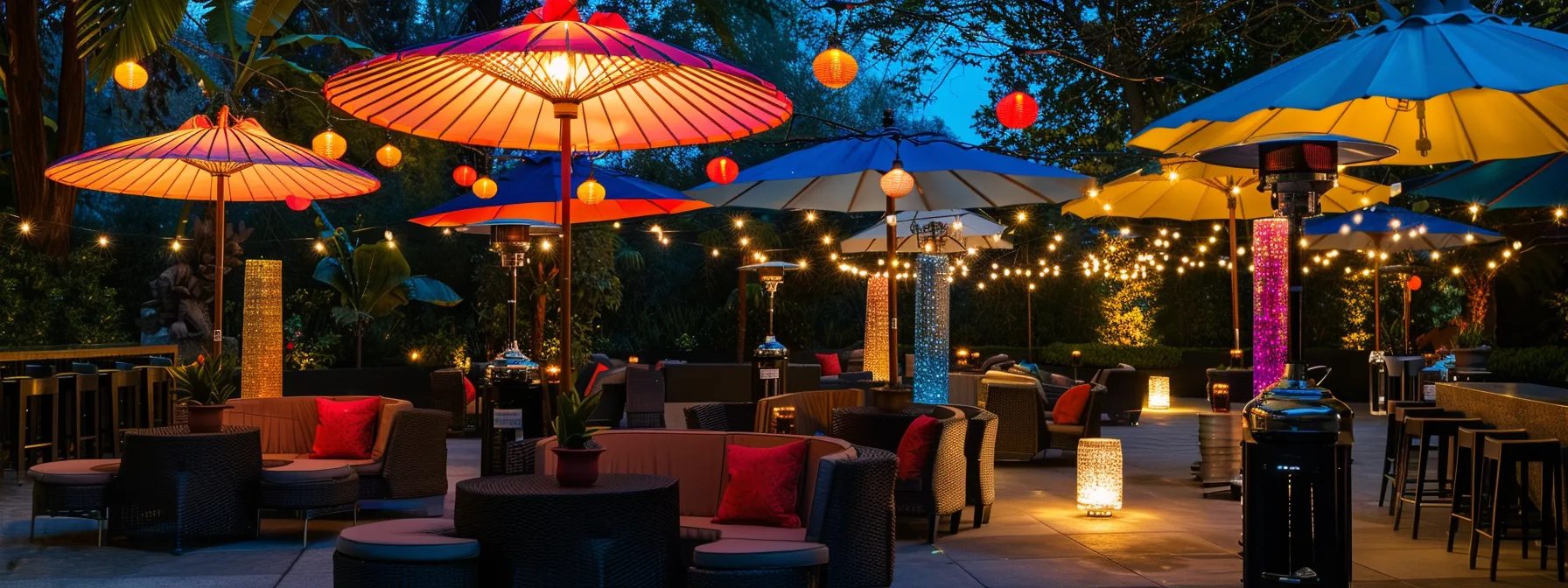
Combining heaters, fans, and umbrellas creates optimal comfort for outdoor events. This section explores coordinating accessories for seasonal gatherings, setting up inviting spaces, and tips for a relaxed atmosphere. Event planners will learn how to balance temperature control, air circulation, and weather protection to ensure guest comfort in various conditions.
Coordinating Accessories for Seasonal Events
Event planners coordinate seasonal accessories to create comfortable outdoor environments year-round. For spring and fall gatherings, they combine portable heaters with light umbrellas to provide warmth and shelter from occasional showers. Summer events benefit from misting fans paired with large sun umbrellas, offering cooling relief and shade. Winter celebrations often feature enclosed tent spaces with strategically placed heaters and wind-blocking panels, ensuring guests stay cozy despite chilly temperatures.
Setting Up an Inviting Outdoor Space
Event planners create inviting outdoor spaces by strategically combining heaters, fans, and umbrellas. They arrange seating areas with comfortable furniture, placing heaters nearby for warmth and fans for air circulation. Large umbrellas provide shade and rain protection, while smaller decorative parasols add visual interest. Planners use these elements to define different zones within the event space, such as dining areas, lounges, and dance floors. This thoughtful arrangement ensures guest comfort and encourages mingling throughout the event:
| Zone | Accessories | Purpose |
|---|---|---|
| Dining Area | Table umbrellas, Heaters | Shade, Warmth |
| Lounge | Cantilever umbrellas, Fans | Relaxation, Cooling |
| Dance Floor | Misting fans, Portable heaters | Temperature control |
| Bar Area | Market umbrellas, Oscillating fans | Coverage, Air circulation |
Tips for Creating a Relaxed Atmosphere
Event planners create a relaxed atmosphere by carefully balancing comfort elements. They use soft lighting, such as string lights or lanterns, to complement the warmth of heaters and the cooling effect of fans. Background music helps mask any equipment noise while setting the desired mood. Planners also incorporate natural elements like potted plants or floral arrangements to soften the space and create a sense of tranquility. These techniques work together to ensure guests feel at ease throughout the event:
- Use soft, warm lighting to create ambiance
- Play background music to set the mood
- Incorporate natural elements for a calming effect
- Arrange seating in conversational groupings
- Provide cozy blankets or shawls for added comfort
Maintenance and Care for Outdoor Event Accessories
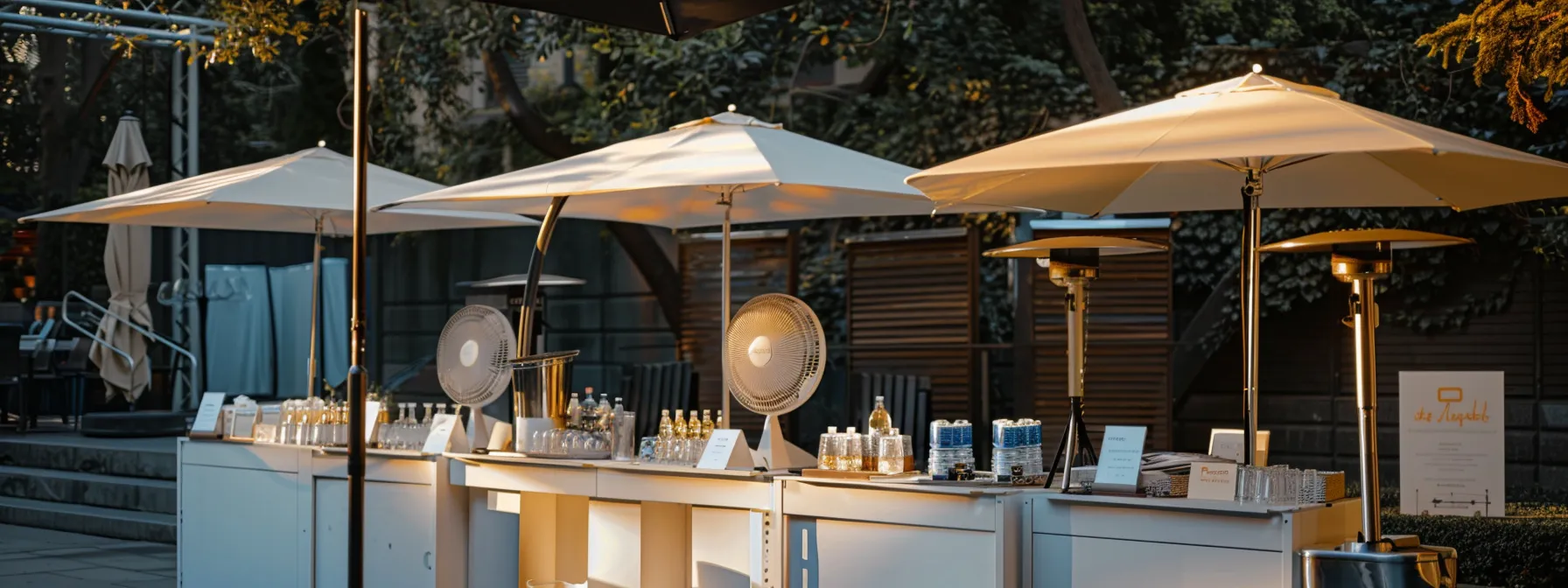
Proper maintenance and care are essential for extending the life of outdoor event accessories. This section covers effective cleaning and storage techniques, seasonal maintenance tips, and strategies to maximize the longevity of heaters, fans, and umbrellas. By following these guidelines, event planners can ensure their equipment remains in top condition for numerous gatherings.
Cleaning and Storage Techniques
Proper cleaning and storage techniques are crucial for maintaining outdoor event accessories. Event planners should clean heaters, fans, and umbrellas after each use, removing dirt and debris with appropriate cleaning solutions. They should dry equipment thoroughly before storage to prevent mold and mildew growth. Storing accessories in a cool, dry place, preferably in protective covers or cases, helps shield them from dust and moisture during off-seasons.
Seasonal Maintenance Tips
Event planners perform seasonal maintenance on outdoor accessories to ensure longevity and performance. They inspect heaters for fuel line leaks and clean burners before winter use. Fans undergo thorough cleaning and lubrication of moving parts in spring, preparing them for summer events. Umbrellas receive fabric treatments and frame checks before rainy seasons. These routine tasks help identify potential issues early and keep equipment in optimal condition:
- Clean and test heaters before cold weather events
- Lubricate fan components in preparation for summer
- Apply waterproofing treatments to umbrella fabrics
- Check and tighten all fasteners on equipment
- Replace worn parts or damaged accessories as needed
Extending the Lifespan of Your Accessories
Event planners can extend the lifespan of outdoor accessories by implementing proper care routines. Regular inspections help identify wear and tear early, allowing for timely repairs. Applying protective coatings to metal components prevents rust, while fabric treatments enhance water resistance for umbrellas. Storing equipment in climate-controlled environments when not in use shields it from extreme temperatures and humidity, preserving its functionality for future events:
| Accessory | Care Technique | Benefit |
|---|---|---|
| Heaters | Clean fuel lines, check connections | Ensures safe operation |
| Fans | Lubricate motors, tighten blades | Maintains cooling efficiency |
| Umbrellas | Apply UV protectant, repair tears | Prolongs fabric life |
Conclusion
Outdoor event accessories like heaters, fans, and umbrellas are essential for creating comfortable and inviting spaces that adapt to various weather conditions. These versatile items enhance guest comfort, protect against the elements, and contribute to a relaxed atmosphere, ensuring events run smoothly regardless of the forecast. By carefully selecting, placing, and maintaining these accessories, event planners can transform ordinary venues into captivating environments that leave lasting impressions on attendees. Investing in quality heaters, fans, and umbrellas, along with proper care and maintenance, allows event professionals to deliver exceptional experiences across seasons and occasions.

